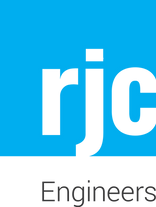

THE 2025 AWARDS
The Third Annual Ontario Embodied Carbon Awards
- Toronto, Ontario, November 20th, 2025
Now in its third year, the Ontario Embodied Carbon Awards—presented in partnership with CLF Ottawa—return to celebrate leadership and innovation in reducing embodied carbon across the built environment. As momentum grows across the province, these awards spotlight the project teams, designers, builders, and advocates who are driving meaningful progress toward a low-carbon future.
This program recognizes Ontario-based projects that have made measurable efforts to reduce embodied carbon emissions through thoughtful material choices, whole-building assessments, and low-impact design strategies—helping to transform the way we build.
Our Goal is to...
Acknowledge and honour companies, projects, and individuals that have demonstrated excellence in decarbonizing our built environment, we have established these awards. Our objectives with this awards programs:

THE EVENT
AWARDS NIGHT CELEBRATION: TICKETS AVAILABLE HERE!
THURSDAY NOVEMBER 20th, 2025
THE GREAT HALL (1087 Queen Street West Toronto)
Doors open 5:30pm
AWARD CATEGORIES
In the third consecutive year of the awards, there are 6 categories of awards:

New Construction -
Large Buildings
The New Construction - Large Buildings award (OBC Part 3) is presented to the team responsible for excellence in low embodied carbon design of a large building. Applications can include commercial, industrial, institutional, and mid to high-rise residential buildings.

New Construction -
Small Buildings
The New Construction - Small Buildings award (OBC Part 9) is presented to the team responsible for excellence in low embodied carbon design of a residential building. Applications can include low rise multi-family as well as single family homes.

Retrofits & Reuse
The Retrofits & Reuse award is presented to the team responsible for excellence in low embodied carbon building reuse projects. Applications can include retrofits or reuse of envelope, mechanical, or structural systems.

Emerging Scopes
This award recognizes excellence in reducing embodied carbon in building elements often overlooked in traditional whole-building life cycle assessments (WB-LCAs). While structure and enclosure typically dominate carbon accounting, this category highlights projects or initiatives that address MEP systems, interior fit-outs, furnishings, landscape, and site elements.

Embodied Carbon Leadership
Presented to individuals, organizations or public sector entities demonstrating outstanding leadership and commitment to low embodied carbon initiatives. Applications can highlight policies, projects, or programs that significantly reduce embodied carbon within the organization or community.

Innovation in Industry
This award celebrates innovations that advance the reduction of embodied carbon in the built environment.
Eligible submissions may include technologies (such as materials, software, or tools), processes, or case studies that demonstrate meaningful progress. The emphasis is on contributions that have impact beyond a single project or organization, with the potential to influence industry practices at scale.

HOW TO APPLY
2025 Applications are NOW OPEN until September 12th, 2025
ELIGIBILITY & JUDGING CRITERIA
FOR ALL PROJECT SUBMISSIONS:
In order to be eligible for one of the project award categories, projects must be:
-
Located within Ontario or within a Canadian province or territory without it's own local Embodied Carbon Awards
-
Have a minimum internal heated floor area of 50m2.
-
New builds, refurbishments, and building expansions or upgrades are all acceptable.
-
Must be able to clearly demonstrate the decisions made in the pursuit of low embodied carbon construction and the impact of those decisions.
-
The LCA should be carried out on construction drawings, but projects do not need to be completed (constructed) at the time of application.
-
Applicants are encouraged to reference the National Research Council National Whole-Building Life Cycle Assessment Practitioner's Guide for information on conducting a wbLCA.
-
If embodied carbon impacts associated with biogenic carbon are calculated, the results shall be reported separately and shall not be included in demonstration of the embodied carbon total and intensity values.
LARGE BUILDINGS:
For Part 3 buildings, a whole building LCA (wbLCA) is required and results must be reported using the following requirements:
-
Include all structural and building envelope components
-
Consider life cycle phases A1-C4
-
Assume a 60-year life-span
SMALL BUILDINGS:
Part 9 projects may either complete a wbLCA, or teams may calculate the material use intensity (life cycle phases A1-A3) using BEAM, or other comparable method. There will be an opportunity to describe the inclusions and methodology.
RETROFITS & REUSE + EMERGING SCOPES:
Please provide the best information available. There will be an opportunity to describe the inclusions and methodology.
FOR LEADERSHIP & INNOVATION AWARDS:
The Embodied Carbon Leadership and Innovation in Industry Awards are intentionally open ended.
Applicants are asked to submit responses to prompts in the application, outlining their contribution and describing how their work has advanced knowledge, or contributed to wholesale reductions in embodied carbon. Judges will be assessing applicants on a variety of criteria including: breadth of work, size of audience, or scale of impact, and how their work has advanced general knowledge and awareness of embodied carbon.
Judges will prioritize contributions made within the last two years (from 2023 onward). While earlier work may be acknowledged for context, the evaluation will focus on recent impact, innovation, and relevance to current practice.
APPLICATION FORMS
NOW CLOSED
FOR PROJECT SUBMISSIONS: APPLY HERE
-
New Construction- Large Buildings
-
New Construction- Small Buildings
-
Retrofits & Reuse
-
Emerging Scopes
INNOVATION & LEADERSHIP SUBMISSIONS: APPLY HERE
-
Embodied Carbon Leadership
-
Innovation in Industry
Preview the questions by downloading the PDFs HERE:
*Please note, if you are having issues with the attachment upload within the submission form, please send your attachments by email to info@clftoronto.com and indicate the submission name in the email.
+ WATCH OUR
Q&A SESSION for SUBMISSION
TIPS & TRICKS:
GOLD SPONSORS

SILVER SPONSORS







.png)
BRONZE SPONSORS









RECAP:
Our 2024 Winners
Congratulations to all our winners and thank you to everyone who submitted your amazing projects.

NEW CONSTRUCTION:
LARGE BUILDINGS
Valhalla Phase 1
(Bloor & The East Mall)
Developed by KingSett Capital, and located in Etobicoke, Valhalla Phase 1 features a residential footprint of about 360,000 sf and an embodied carbon intensity of 363kgCO2e/m2. Tower A has 30 storeys, and Tower D has 11 storeys over 1 level of shared parking. The jury selected this project due to its deep considerations for design optimization and an integrated embodied carbon approach–building on the work done by members of the team through their research project, “Low Carbon Now.” This project is targeting the CaGBC ZCB certification and demonstrating the proof of concept for the ‘Low Carbon Now’ model, where residential and parking grids are aligned to eliminate transfers, wallumns are used instead of shear walls, and low carbon specs for insulation, rebar and concrete are employed.
NEW CONSTRUCTION:
SMALL BUILDINGS
Rotary Health Centreat Camp Kawartha
Located in the Kawarthas, on Clear Lake, Camp Kawartha is a Children’s Camp celebrating its 100th year! The Health Centre, designed by Straworks, is approximately 2,500 sqft and has an embodied carbon intensity of 135 kgCO2e/m2 (if you include the biogenic benefits, this goes down to only 32 kgCO2e/m2!). The project was built in the middle of COVID and features next-generation bio-based material and systems solutions including straw bale walls, supplementary cementitious materials (SCM) content in their concrete, slabless slabs, earthen floors, cellulose insulation, rubble trench foundations, recycled glass below-grade insulation, hemp insulation and foam-free products.


RETROFITS & REUSE
78 Advance – Headquarters of Flat Iron Building Group
Located at 78 Advance Road in Etobicoke, this project consists of an 18,000 sqft retrofit of an old warehouse and newspaper printing facility. Flat Iron Building Group are a design-build firm and they achieved a low-carbon, net zero building that serves as their new commercial office space. The project has immense pedagogical potential for their future clients, is targeting the CaGBC ZCB v3 standard, an 80% reduction in operating emissions intensity and a 40% reduction in embodied emissions intensity. This was achieved by reusing the existing structure, using carbon-negative flooring, and carefully selecting low embodied carbon materials and finishes. The result is an A1-A3 embodied emissions intensity of 90kgCO2e/m2. The judges were impressed with the broader message this project sends, in particular their emphasis on post-retrofit reductions.
INTERIORS
BDP Quadrangle Studio
When setting out to move out of their old digs near Liberty Village and relocate to their impressive new 3,000 sq.m office at The Well, BDP Quadrangle did so with the intent of having the least carbon footprint possible. Planned, designed and constructed through COVID meant they had to be as nimble as possible to deliver the flexible workspace they would need. The study was carried out at design development and again at the construction drawing phase and evaluated over a 25-year lifecycle. The project team employed creative upcycling, focused on a “less-of-everything” approach and were conscious of their material selection (and the associated EPDs) to deliver an impressive embodied carbon intensity of 166 kgCO2e/m2.


ORGANIZATIONAL & PUBLIC SECTOR LEADERSHIP
Windmill Development Group
Windmill Development Group demonstrated a strong commitment to whole-life carbon, backed by 3rd party verification, validation and certification. The organization also demonstrates a holistic view beyond carbon through their commitment to the One Planet Living program. Windmill showcases their leadership in the industry, and are willing to share through partnerships, as well as through consultancy through Urban Equation in order to expedite the building industry to a low-carbon future.
INNOVATION IN INDUSTRY
SEED Building Systems
The SEED (Sustainable, Ecological, Efficient, Durable) Building Systems are Passive House quality panels made with bio-based materials. Operating out of a facility in Baysville, Ontario they produce CSA-certified wall, floor, and roof panels precision manufactured in a controlled facility. The jury was impressed with both the commitment to producing something prefabricated to meet climate and housing crises as well as the emphasis on the degree of biogenic carbon storage in the panels.

2024 AWARD NIGHT GALLERY











